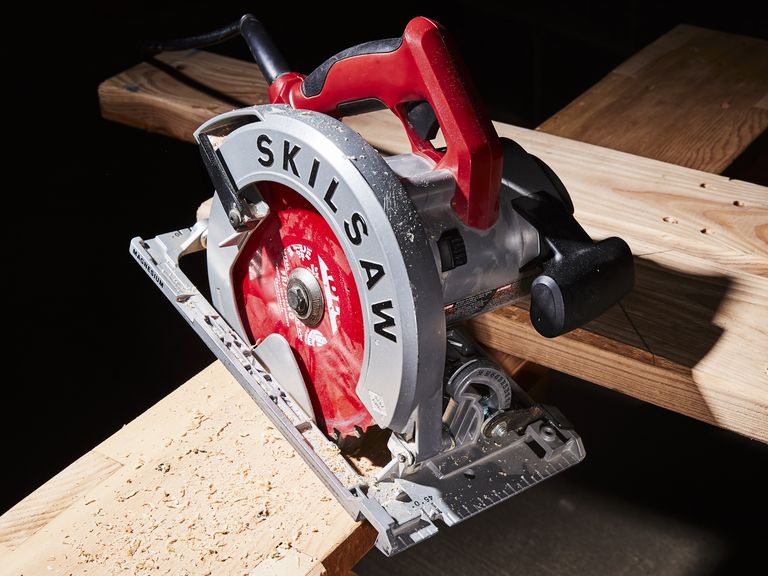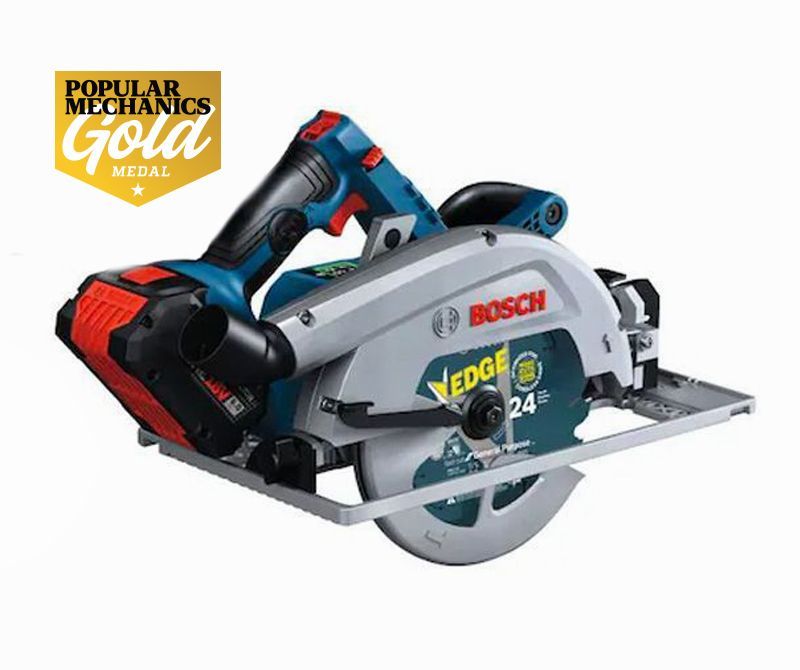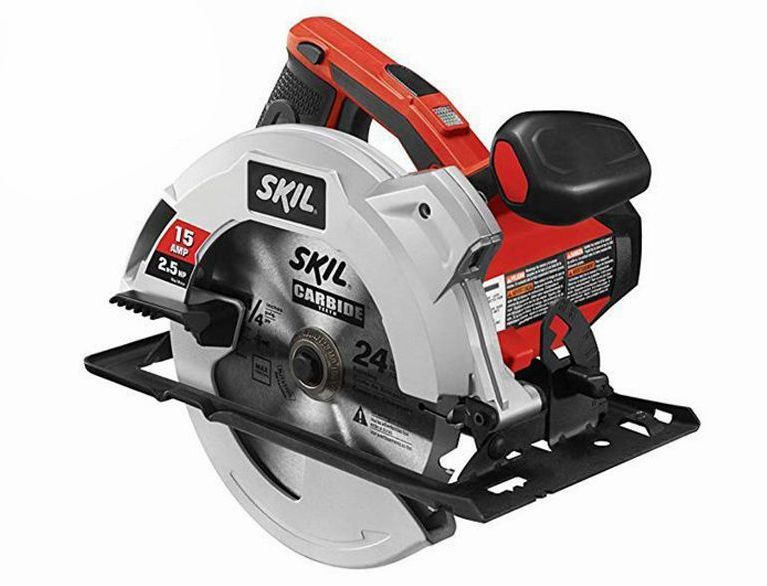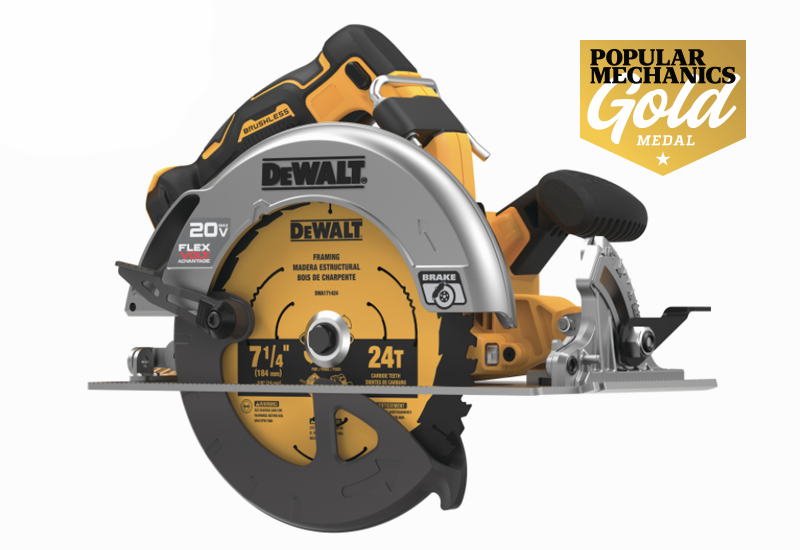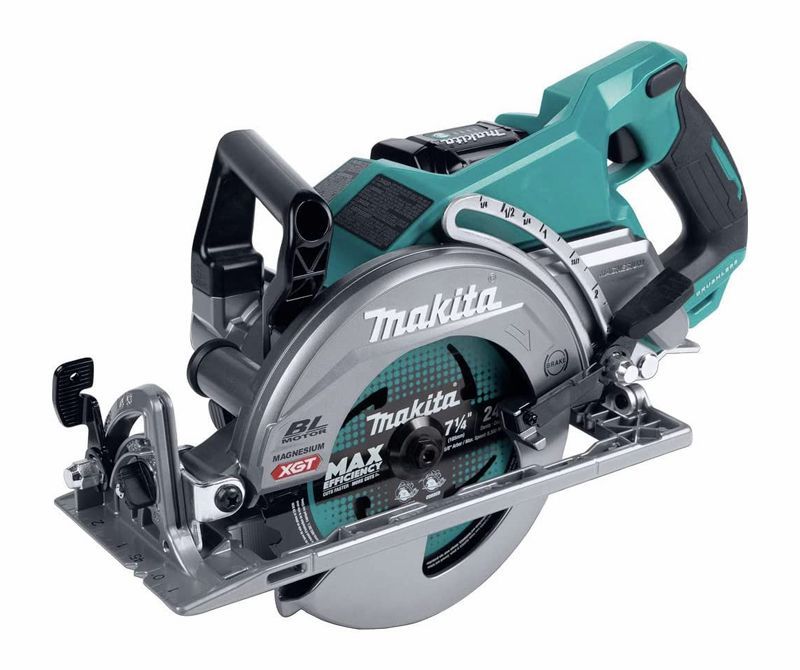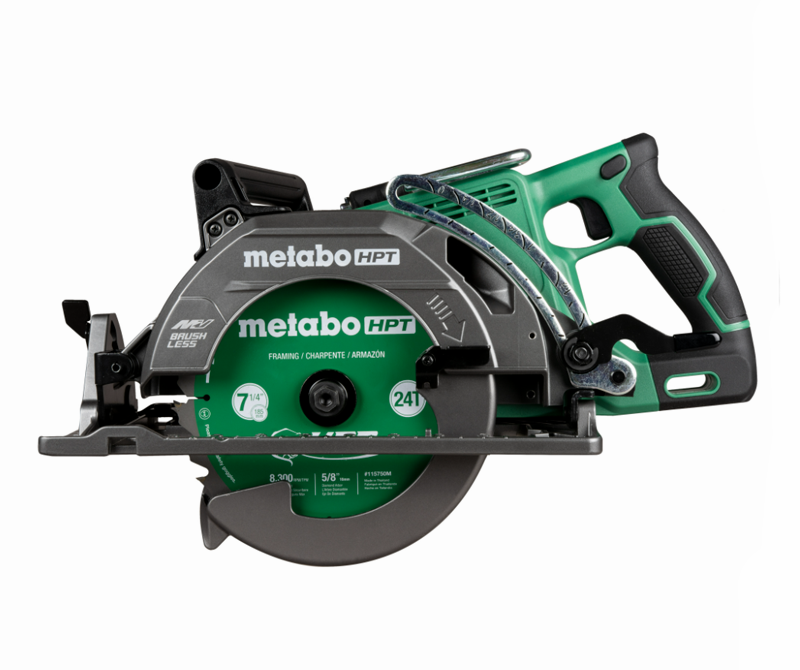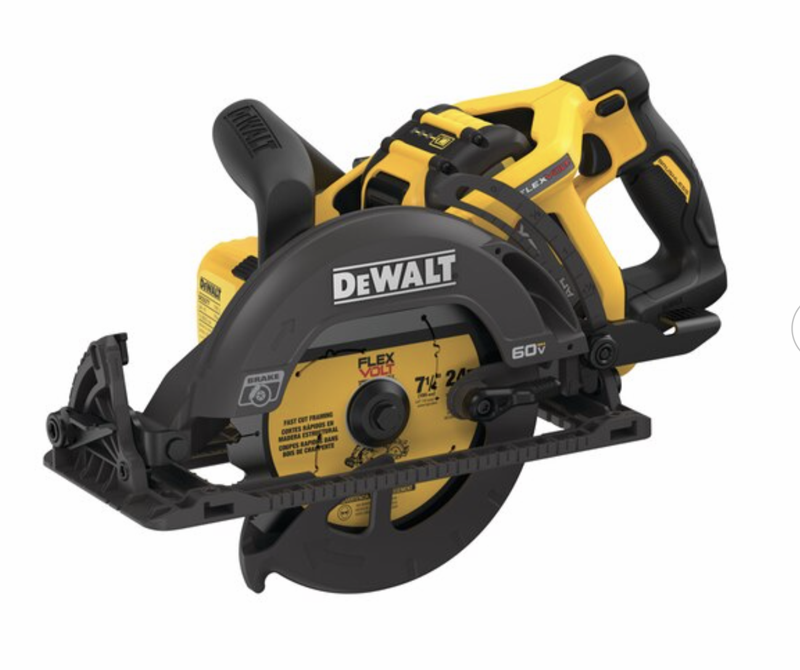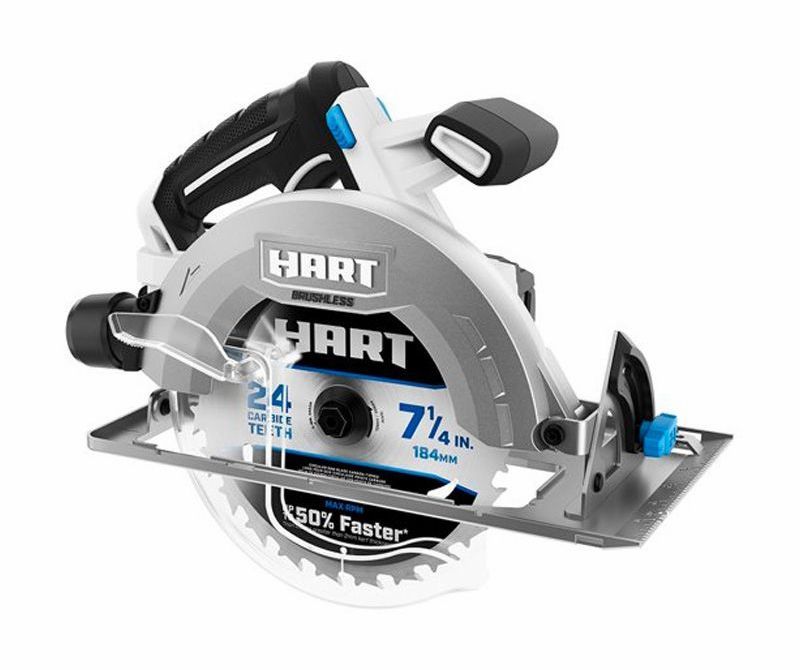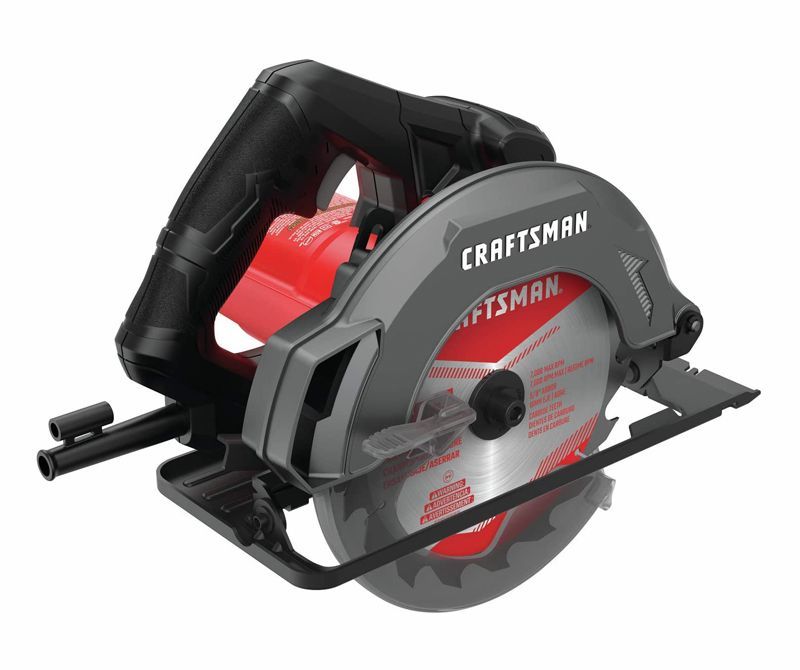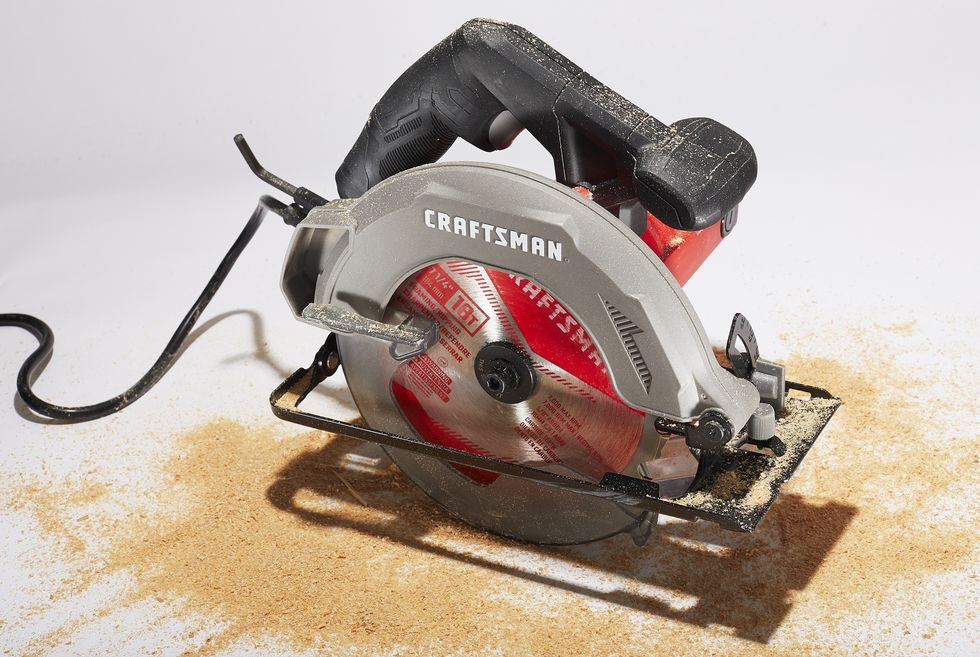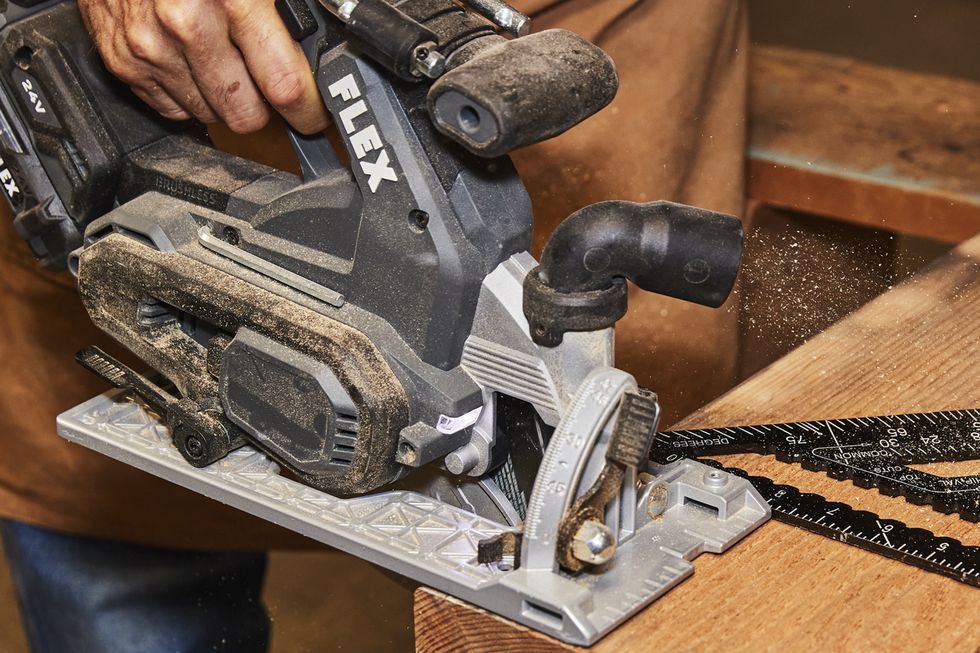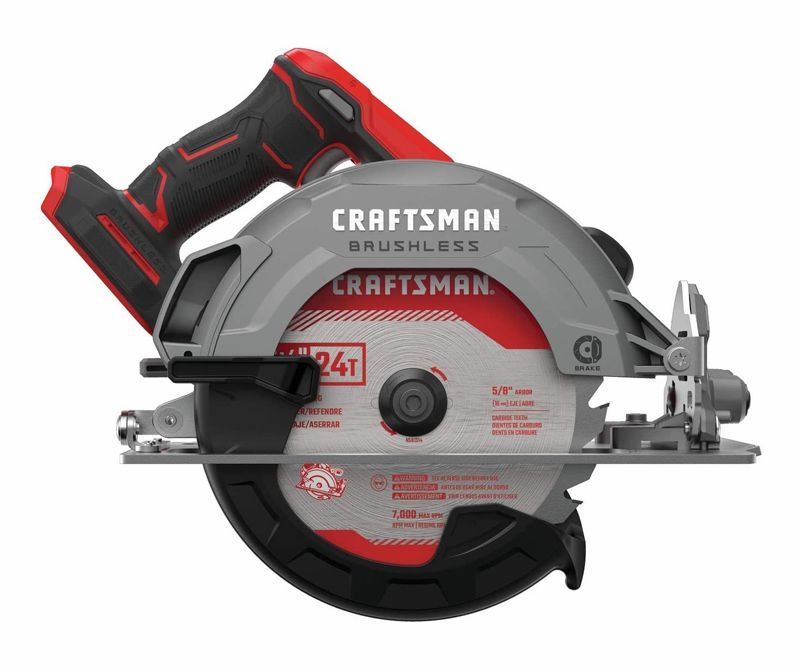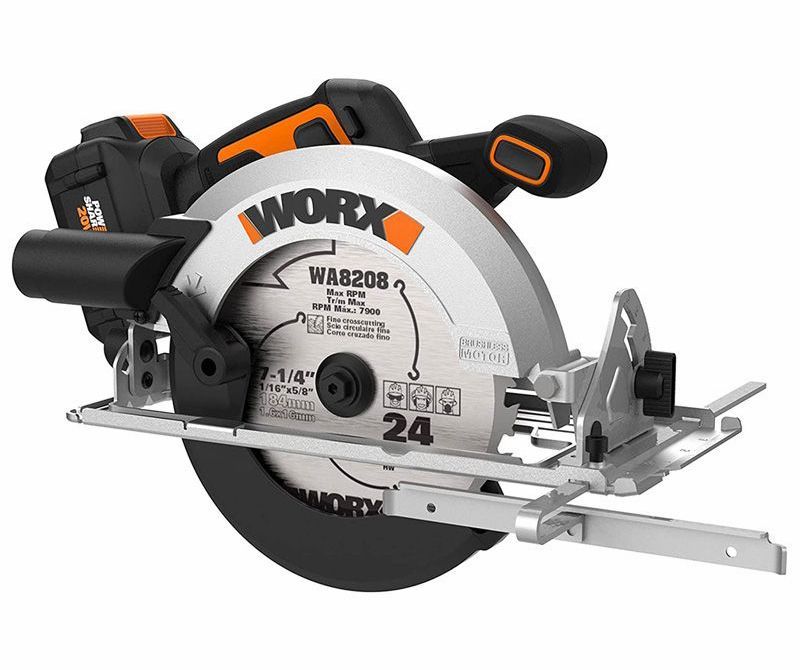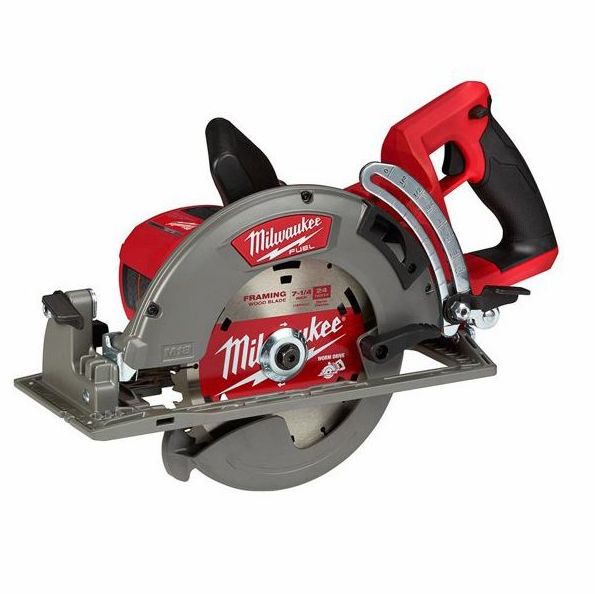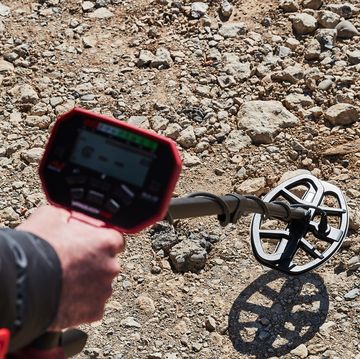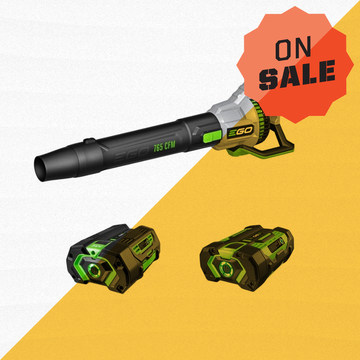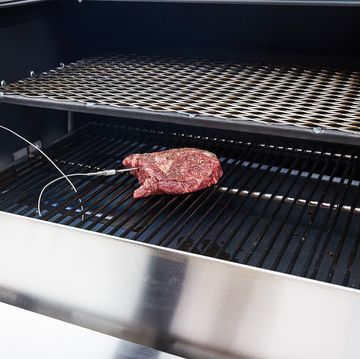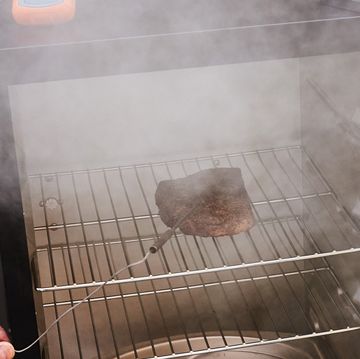If you need to cut a large amount of lumber or plywood, or to break down lots of hardwood pieces to feed through a table saw, you’re going to need a circular saw. Sure, there are alternatives like hand saws and jigsaws, but they don’t come close in terms of efficiency and versatility. Plus, with a little practice, they’re easier to use than you might think. Bottom line: the circular saw is the best tool for fast and accurate cutting.
Here at Popular Mechanics, we constantly test and use circular saws in our own projects. Our favorites below range from budget-friendly models, to pro-duty tools that a contractor could use to frame a house.
Our advice is always the same regarding our recommendations: Your goal isn’t to buy the most powerful tool or the least expensive, but the tool that’s the right fit for you. Using our data, look at the circular saw’s performance, its price, and its physical characteristics, such as its weight and whether it’s corded or cordless. From there, consider how you like to work, and make an informed selection.
Read on for quick info on the best circular saws from our testing, then scroll down for buying advice and in-depth reviews of these and other models.
The Best Circular Saws
- Best Overall: Bosch GKS18v-25GCB14
- Best Value Corded: Skil 5280-01
- Most Powerful Cordless: DeWalt DCS573B
- Best Rear-Handle: Makita GSR01M1
- Best Value Cordless: Hart HPCS25
What to Know About Circular Saws
Circular saws are powerful tools that crosscut wood (cut across its grain) and rip it (cut with the grain). Save for the rear-handle saws we cover, the tools that we tested do not exhibit much design variation. With a few exceptions, most of the blades are 7.25 inches in diameter, positioned on the right side of the motor. When the blade is fully lowered, the saw cuts to about 2.25 inches deep (or slightly deeper).
A More Powerful Saw Isn’t Always Better
If you’re ambitious, you might want the same saw the pros use. Contractor-grade saws can have the blade on the left or the right of the motor. Corded models have motors that draw as much current as 15 amps. The saw rides on a larger, more damage-resistant shoe and is equipped with a big, tough trigger switch, larger and tougher bearings, and a thick but highly flexible cord. These features promote durability but increase the saw’s weight. The average homeowner-duty saw (with a motor drawing 12 amps) weighs 8 to 9 pounds. Contractor saws start at 10.5 pounds and go up from there.
But a contractor-grade saw may not help you get the job done faster, believe it or not. While it’s true that pro saws cut faster compared to homeowner saws, their most important attribute is durability. A homeowner working with a pro-level circular saw may find it too heavy and be unable to take advantage of its speed and power.
With manufacturers working so hard to develop cordless tools, you also may wonder if these are the best fit for you. Homeowner-grade cordless saws have enough power to cut 2 x 3 and 2 x 4 lumber, pine planks, and plywood. But if you expect to make more difficult cuts such as plunging through an interior floor, frame out your basement, or cut pressure-treated lumber, opt for a pro-duty cordless or corded circular saw.
What Else Do You Need?
Aside from the saw, you need a couple of carpenter’s pencils and a combination square to both mark the lumber and guide the saw for accurate crosscuts. For corded circular saws, you also need a heavy-duty, 15-amp extension cord, safety glasses, and some ear protection.
How We Tested
Our test material is Douglas fir 2 x 4, 2 x 10, 4 x 4, and 4 x 6 pressure-treated southern yellow pine (reserved for full-depth cuts on our pro-duty rear handle saws), some hem fir, and some rock-hard red oak thrown in for good measure. We use each saw to cut across and with the grain, the blade perpendicular to its shoe and at an angle to it.
Next, we did some hairsplitting crosscuts, guiding each saw along a square held across the wood. If the saw held true along the cut, that told us that its shoe edge and blade are parallel. If the saw moved off the square (and the cutline), we knew something was amiss. The most common cause is a saw motor and body that makes a slightly sloppy fit with the shoe on which it rides.
Here’s how the best corded and cordless saws—from inexpensive, homeowner-duty saws to pro-worthy models—fared in our test.
We’ve tested many circular saws, and this one comes as close to perfection of the form as is possible. Equipped with a standard 7.25-inch blade and an 8-Ah battery and weighing 11.6 pounds, it’s a nimble cutter by itself. But the good news gets better: It has an aluminum accessory track—no special shoe or mounting hardware required. Lay the track on the board or plywood and slide this Bosch down it like a locomotive riding the rails. The resulting rip or crosscut is table saw-accurate.
To control cutting depth, the Bosch circular saw has a thumb latch right above the trigger. Move the latch forward and press down, and the saw’s shoe drops. To fine-tune the shoe’s position, simply hold it with one hand while pressing down on the latch. When the shoe is where you want it, release the latch. And the amount of blade exposure below the shoe is right where you need it.
There's an eco setting that reduces power for light cutting while conserving battery life, and six speeds for enough range to make multiple cuts in thin plywood on low to full bore (and maximum blade depth) to cut construction lumber. A battery life readout tells you how much charge you have left.
Skil has a long history with the circular saw, and it puts that institutional knowledge to good use with this inexpensive but capable tool. Among the homeowner saws we tested, this one is about as close to pro-grade as you can get. And given what it costs and its price-performance ratio, it would be fitting for a contractor to keep this saw on the truck as a backup or a tool.
It's accurate and handles well, the depth of cut is easy to adjust, and the shoe is perfectly parallel with the blade. And we were pleasantly surprised by the torque its 15-amp motor provides. Even with the blade fully submerged in lumber for rips and crosscuts, it powered through nicely.
DeWalt took its 20-volt cordless circular saw and sent it to the gym. Now it can run on a standard 20-volt Max battery or the hulking dual-voltage 20/60 Flex Volt power pack. The latter enables a ridiculous amount of cuts on one charge or repeated cuts at its depth of 2-9⁄16 inches. It made so many buzzes through 2 x 4 in our test that we didn’t even bother counting them; we ran out of wood before the battery showed any signs of fading. Suffice it to say that the larger the amp hours of the power pack you put in this thing, the more cuts you can expect—up to a day’s work or close to it.
During our testing, we found this circular saw really comfortable to operate, thanks to the ergonomic handle positions and rubber grip. We also appreciated the effectiveness of the electronic blade brake, which stops the blade from spinning in a second or two as soon as you release the trigger.
Overall, DeWalt's cordless circular saw is a powerful, smooth-cutting tool with outstanding accuracy. If you’re thinking of going cordless but you want pro performance, this is the one to get.
The Makita's combines light weight, robust cutting power, and outstanding industrial design—ideal if you need a lot of cordless muscle, but don’t want to compromise accuracy or stability. Everything about this saw is comfortable and easy to handle, from the well-shaped trigger to the push lever of the spindle lock. Those are small details but they add up to make a more pleasant workday.
During our testing, we found that the Makita's rear-handle design aided in providing leverage and that its extended body helped with maneuvering and maintaining control during longer cuts.
Final detail: Makita puts a great blade on this saw. Don’t spend money replacing the blade when you buy this circular saw. Take it out of the box, charge the battery, mount the blade, and get to work.
The Metabo-HPT embodies aspects of the traditional left-blade circular saw that have endeared it to generations of carpenters. Its chief virtue is that it has a high power-to-weight ratio. This is a fast-cutter, even if it’s not quite as strong as the DeWalt, Milwaukee, or Flex rear-handle saws, but (depending on the saw you’re comparing it to) it is almost 3 to 4 pounds lighter. Since house framing is all about speed, weight counts. Shaving a couple of pounds off may equate to finishing the house sooner, which could contribute to your bottom line.
But let’s say that you’re simply a do-it-yourself owner-builder type. This circular saw is a pleasure to use for just about any DIY project. It cuts any typical framing material but also handles the 4 x 6 pressure-treated timber we use to test rear-handle saws, with enough power for full-depth cuts of about 2.5 inches. That means you can use it for breaking down plywood sheets or lengths of hardwood lumber for that furniture you want to build.
In fact, during our testing, this circular saw did just as well cutting full-depth bevels as it did full-depth rips and crosscuts. Our verdict? Its light weight, power, and easy-handling features help to make this a truly productive circular saw.
The DeWalt 60V is a massive slab of a saw and the heaviest of the five rear-handle saws we tested—even heavier than the 13.4-pound Milwaukee below. Its chief attribute is cutting power. If you need that, particularly for making long beveled cuts in rafters or cutting wet pressure-treated lumber for decking framing or landscape work, this saw serves nicely for those purposes.
The caveat is that it’s not particularly nimble. We don’t see it as a house framing tool where you need a better combination of lightness and power. Could you frame a house with the saw? Of course, probably doing most of your day’s work on a single charge of its whopping 9-Ah battery. The saw is well designed, with a comfortable handle and a magnesium shoe with about as much friction as a melting ice cube; for such an unwieldy saw, it slides pretty nicely.
We test homeowner and professional circular saws the same way. In the case of this 20-volt Hart, that meant cutting Douglas fir framing lumber, sawing through the 1.5-inch thickness and also with the board turned on edge so the blade was fully submerged at its maximum depth in the lumber.
Our verdict: You won’t confuse this saw with one used to frame houses; push it too hard and you’ll trip its thermal cutoff. But it’s got enough oomph for cutting some lumber, including a 4 x 4. We liked the lock button (officially, the spindle lock); press it to hold the blade in place to more quickly turn off the nut that tightens down on the blade. We also liked its safety latch, which is easy to work whether you’re right- or left-handed.
The Craftsman renaissance is real. Since Stanley Black & Decker (also the owner of DeWalt) bought the company in 2017, Craftsman tools have been improving. We’ve always liked the brand, and we were very pleased to find this saw carrying on a capable tradition of high-quality power tools.
This circular saw is about a pound lighter than the Skil above. That may not sound like much, but it can make a work day go a little bit easier, especially given that you’re probably also moving lumber and hammering nails.
Yes, the Craftsman’s motor is a bit smaller than the Skil in terms of its amperage, but the cutting performance between the two tools is negligible. That Skil ranked slightly higher for us due to the fact that the edge of the CMES500’s shoe isn’t quite parallel to the blade, creating minor inaccuracy when you run the saw along a square in crosscuts or use a long straight edge for rips. Fortunately, if you apply a little extra due diligence, you can keep the saw cutting true.
So what makes a standout for cutting shoring and industrial lumber? This material is thicker, wider, and more difficult to handle and cut than standard lumber used to build houses. It's used for jobs like supporting ships in ship yards and propping up gigantic pipes and valves in fabrication facilities. It's the shoring material that's used to stabilize the wall of excavations, usually around foundations but also pipe trenches.
In most cases, there are only two ways to cut it: with a chainsaw or the toughest circular saw you can lay your hands on. This Flex’s power makes it superior for this “toughest of the tough” cutting because it has the power of its peers (DeWalt and Milwaukee) but it’s much easier to handle.
Its balance and geometry help you settle it quickly on the cut line, and it has more than enough power to see the cut through to completion. Since this type of extra-heavy-duty work is typically done in poorly lit conditions, the Flex’s work light is a huge help. If cutting industrial material is your game, consider this Flex.
We liked this 20-volt saw’s handling, light weight, power, and fantastic line of sight to the blade. So much so that we used it to test 7.25-inch circular saw blades that we were investigating for recent coverage.
We didn’t pamper it, cutting Douglas fir framing lumber and red oak. Everything about the saw is excellent, from its workmanship to its reliable cordless power to the accuracy of its cut. If you’re in the 20-volt Craftsman system, we fully recommend adding this to your arsenal. You won’t be disappointed.
This petite saw weighs a mere 8.6 pounds, yet we found it to be unusually capable. Equipped with a 7.25-inch blade, it made short work of 4 x 6 pressure-treated lumber, 2 x 10 Douglas fir, 3⁄4-inch plywood, and laminate flooring. And with the 4-Ah battery, this saw does a significant amount of work before you need to swap in a new one or give it a recharge.
To those attributes, we would also add that it’s well balanced and easy to handle. While anyone can appreciate those features, it's especially nice if you use the saw only on weekends for home projects.
You can’t help but be impressed by this Milwaukee saw’s cutting power and longevity. Slide in a massive 12-Ah battery and you’ve got several hours of carpentry capability unencumbered by a cord.
Our 4 x 6 pressure-treated lumber was no match for it, barely putting a dent in its battery capacity. Furthermore, it really does cut with the same authority that we get from our old corded worm-gear saw, but the Milwaukee is infinitely safer and more productive due to its electric brake that instantly stops the blade the moment you let off the trigger.
Would the Milwaukee be suitable for framing a house? Yes, in the sense that its massive motor and equally sturdy gear assembly provide it power to spare–more than enough for house carpentry. On the other hand, all that motor and gear assembly creates a lot of outboard weight and bulk to the right of the blade. In that respect, it’s very much like a corded worm-gear saw. So if you’re already framing with a corded worm-gear saw and have a well developed right forearm, the Milwaukee is a good fit for you.
But perhaps a better application for this is cutting form lumber for concrete and making cuts in industrial lumber used to shore up excavations and mines. In those applications, much of the cutting goes on at a central cutting station. Power and durability, not so much mobility, rule the day in those applications. And if you need those two features, this Milwaukee delivers.

Alex Rennie is a freelance writer who specializes in the Home Improvement, DIY, and Tool space. As a former residential and commercial carpenter, Alex uses his hands-on experience to write practical buying guides, how-to articles, and product reviews. His work has also appeared in Business Insider's Insider Picks, and before his writing career, he was a full-time carpenter living in New York City. There, he worked as part of a team designing, building, and installing large furniture pieces, as well as performing a variety of home repair and maintenance projects. Alex currently lives in Los Angeles, CA, and spends his free time exploring the beaches and mountains with his fiancé and their dog Louie.
